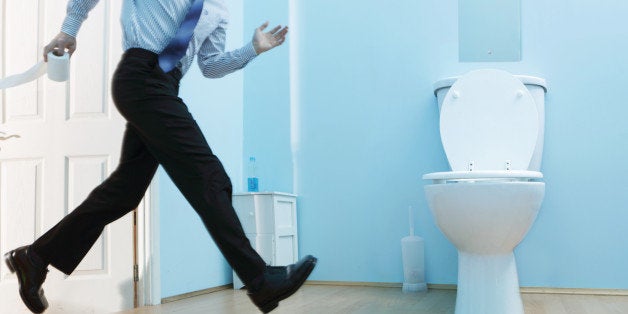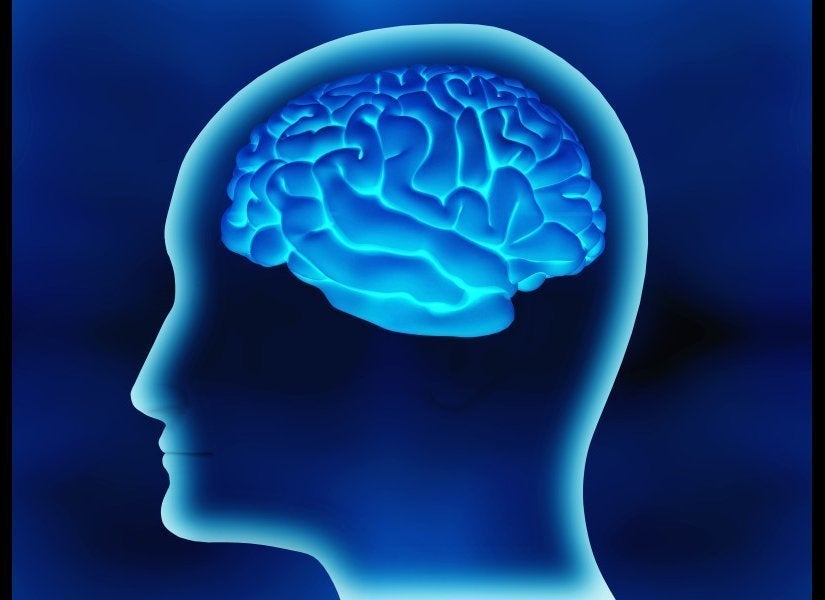
SPECIAL FROM Grandparents.com
Do you feel like you're constantly making trips to the bathroom? And do you sometimes (or often) find you leak a little between trips? You're not the only one—by far.
Twenty-five million adults (75-80% of them being women) in the U.S. have occasional or chronic urinary incontinence (UI), and an estimated 33 million Americans suffer from Overactive Bladder (OAB), according to the National Association for Continence. Another statistic you might relate to: two-thirds of people between the ages of 30 and 70 have never discussed bladder health with their doctor. That's a lot of unanswered questions!
The good news is, once you and your doctor figure out why you're running to the toilet all the time, there's plenty you can do to counteract the problem.
Recognize Your SymptomsThe symptoms of UI are pretty easy to recognize—loss of bladder control—and mainly occur in the following circumstances:
- Urge - A sudden urge to urinate followed by an involuntary loss of urine; this is related to a weakening of the muscle that closes the bladder
- Stress - A loss of urine as a result of pressure, such as straining, coughing, laughing, or sneezing
- Overflow - A continuous leakage or dribbling that occurs when the bladder cannot empty completely
- Mixed - Urine loss after experiencing more than one of the other symptoms
On the other hand, symptoms of OAB is can be more difficult to diagnose.
Common symptoms:
- Urinating more than eight times per day or more than once at night (urinary frequency)
- A strong and sudden desire to urinate (urinary urgency)
"It's hard to find an exact definition of 'overly-frequent,' says Shari Brasner, M.D., assistant clinical professor in Obstetrics and Gynecology at The Mount Sinai Medical Center in New York City. "Many doctors simply use the patient's reporting that their quality of life being affected as significant enough. But generally, more than seven times a day and more than twice at night is abnormal."
Why Me?Unfortunately, the grandparent age bracket suffers from bladder health problems more often than others: One in five adults over age 40 are affected by OAB. "There are multiple and complicated reasons why we urinate more often as we age," says Dr. Brasner. "But it is primarily a change in the sensitivity of the muscles that contract to empty the bladder. They become more unstable and cause contraction of the bladder even before it is full."
And if you feel like you wake up to urinate more often than ever, there's a reason for that, too. "As we age, our kidneys process more of our urine at night," says Adam Ofer, M.D., an obstetrician and gynecologist and the Director of Gynecology at Norwalk Hospital in Connecticut. "You may notice that by the end of a long day you seem to retain more water and your feet appear more swollen. But as you rest flat, the fluid in your body is able to drain into the core of your body and get to the kidneys, which process the fluid and excrete it as urine during the night."
Solutions to Stop Overactive Bladder
SItuation #1: You have the urge to urinate frequently and a normal amount of urine comes out.
Solution: You're probably just drinking a lot of liquids, says Dr. Ofer. Cause for concern: minimal. "Although, it is important to let your doctor know about any excessive thirst or excessive urination so he can rule out diabetes, which makes you thirstier." (As a benchmark, healthy adults shouldn't drink more than two liters of water a day; more than that can overstimulate the bladder, says Dr. Brasner.)
SItuation #2: You have frequent urges to run to the bathroom and only a small amount of urine comes out.
Solution: Try to change bad habits, says Dr. Ofer. Just like you can inadvertently train yourself to have poor sleep habits, bad bladder habits can develop very quickly without your noticing it. "For example, if you always urinate before leaving the house and every time you pass a bathroom ‘just to be safe,’ then you are creating bad habits for your bladder," says Dr. Ofer.Become the boss of your bladder by retraining it. Go to the bathroom on a schedule while you're awake and practice strategies to control sudden urges.
Situation #3: Pelvic prolapse. Otherwise known as cystocele (SIS-toe-seel), pelvic prolapse occurs when the supportive tissue between a woman's bladder and vaginal wall weakens and stretches, allowing the bladder to bulge into the vagina and giving you the false sensation that your bladder is full. This condition is often directly related to aging, since estrogen is partly responsible for keeping pelvic muscles strong.
Solution: Only surgery can truly reverse pelvic prolapse, but to keep it from getting worse, Dr. Ofer recommends avoiding anything that cause strain in your lower abdomen, including bowel movement strain, repeated heavy lifting, and deep, chronic coughing.
Situation #4: Constipation. "Your pelvis is not that big and all the organs are interconnected, so if your rectum and colon are full of stool, it will may make it difficult to empty your bladder or irritate the bladder in a way that causes severe urinary urgency," says Dr. Ofer.
Solution: To encourage healthy bowel movements, doctors recommend staying adequately hydrated and eating a fiber-rich diet. For more information on keeping your "plumbing" moving smoothly, read our article on what healthy poop should look like.
Situation #5: Overactive Bladder. When normal bladder signals are interrupted somewhere between your brain, spine, and bladder, you might suddenly feel like you have to pee—even when you don't. "Your brain constantly gives a signal to your bladder to stay relaxed and a signal to your urethra to stay contracted, so that urine does not leak out," says Dr. Ofer. "Overactive bladder causes the bladder to squeeze and give you a horrible urge to go to the bathroom.
Solution: If you think you have OAB, Dr. Ofer advises making a visit to your gynecologist or urogynecologist. "Treatments include vaginal estrogen to treat vaginal atrophy (or thinning) that can sometimes cause the disruption of normal bladder signals, biofeedback, and medications that can relax the bladder muscle," he says.
Practice Good Overall Bladder Health
Along with solutions like avoiding triggers such as caffeine and alcohol, maintaining a healthy weight, and practicing relaxation techniques (when you get the urge, take a deep breath, squeeze your pelvic muscles, and let the “wave” of needing to go pass), both Dr. Brasner and Dr. Ofer recommend doing Kegel exercises as a healthy bladder habit.
How to do a proper Kegel exercise:
To help you isolate the muscle that controls urine flow, try the following techniques
- Put a finger inside your vagina and squeeze the muscles around the finger.
- Pretend you are sitting on a marble and you have to pick up the marble using your vagina.
- Stop and start a flow of urine. If you do this, make sure to do this only once or twice to figure out the correct muscles—some doctors think you should not do this at all, because if you get in the habit of doing it, it could damage your bladder.
After you learn which muscles to tighten, you can do the exercises in any position (sitting in a chair or lying down). You do not need to do them while you are in the bathroom.
"Do the exercises 3 times a day, on 3 or 4 days a week," says Dr. Brasner. "Each time, flex your muscles 8 to 12 times, and hold them tight for 6 to 8 seconds each time you tighten. Keep up this routine for at least 3 to 4 months to see results."
Read more from Grandparents.com:Are you taking too much medication?4 compelling reasons to brush your teethCan sleep prevent Alzheimer's?
